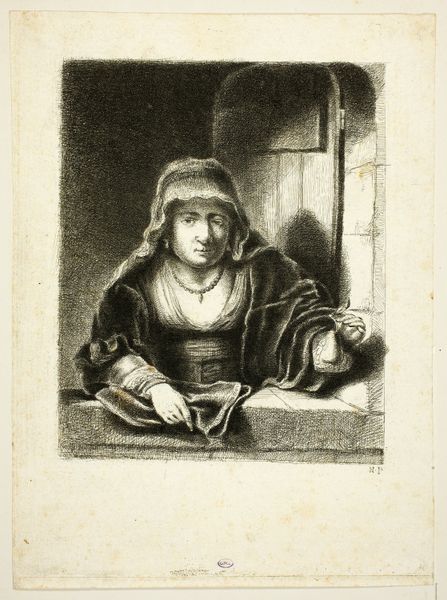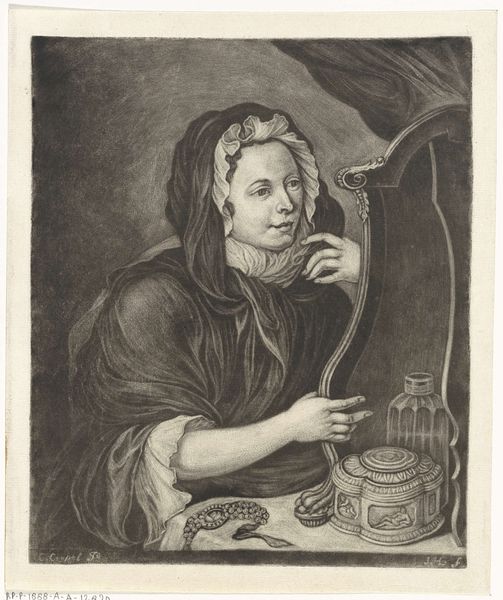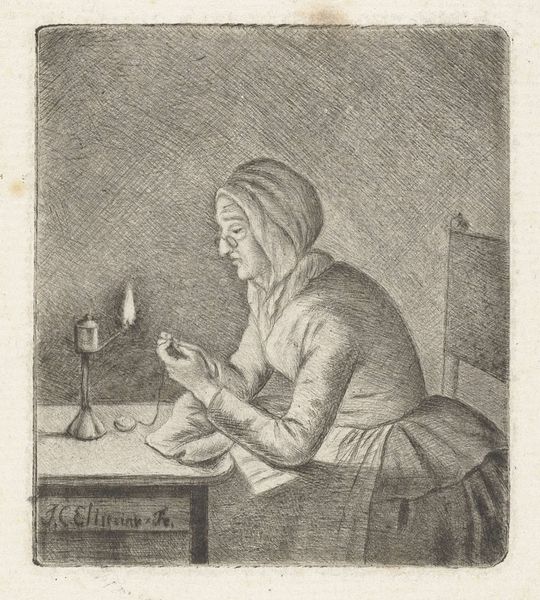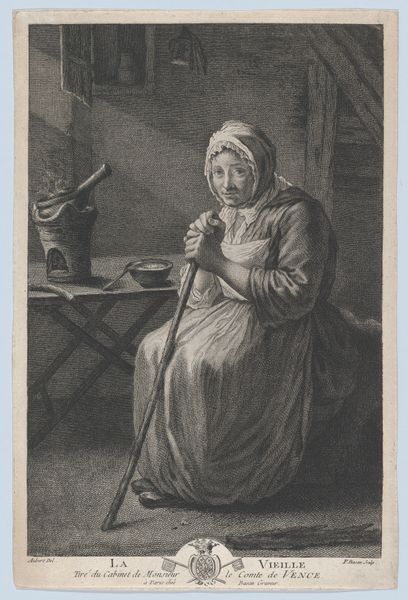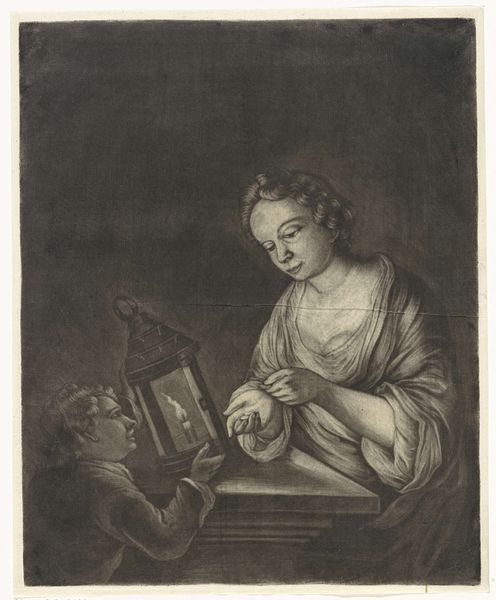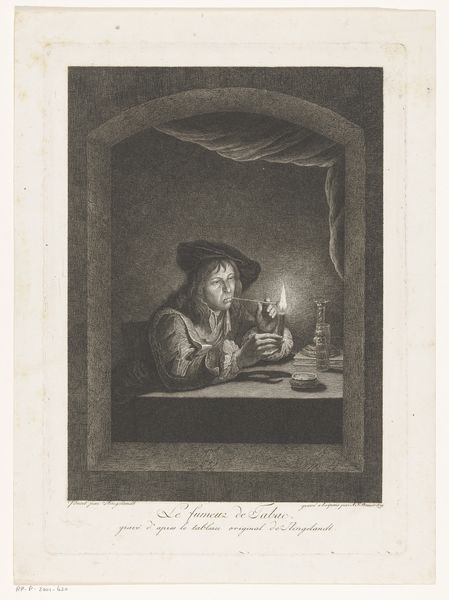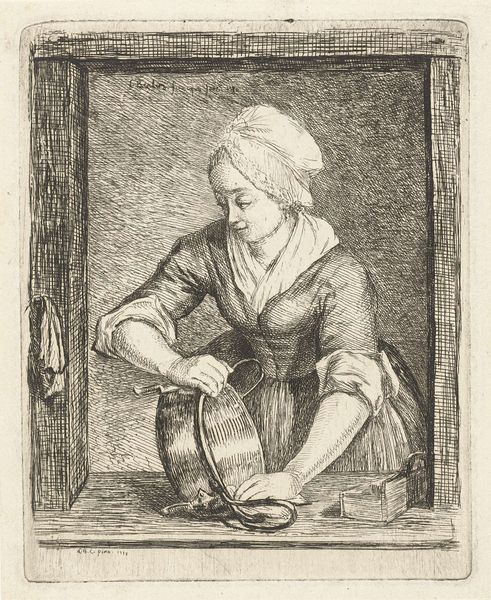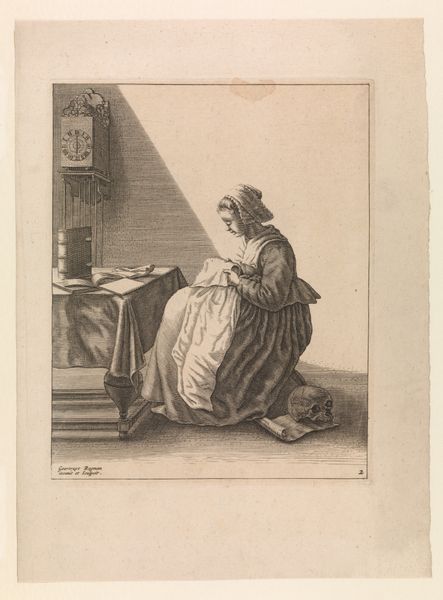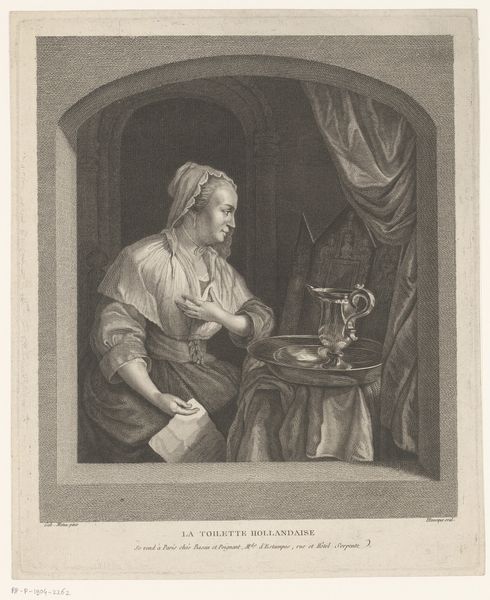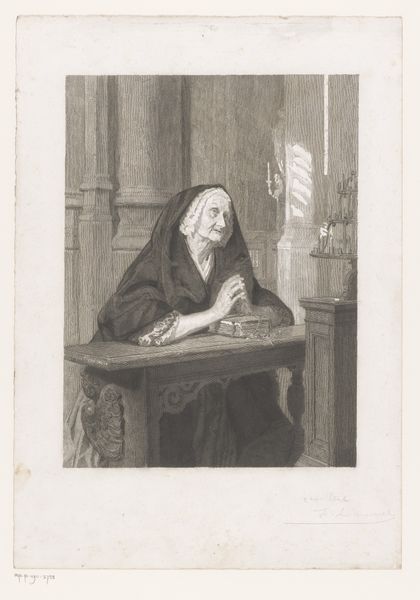
drawing, paper, ink
#
portrait
#
drawing
#
dutch-golden-age
#
pencil sketch
#
paper
#
ink
#
pencil drawing
#
coloured pencil
#
genre-painting
#
watercolor
Dimensions: height 130 mm, width 107 mm
Copyright: Rijks Museum: Open Domain
Curator: There's an incredible quietness emanating from this ink and pencil drawing. The monochromatic palette lends it such a serene, almost dreamlike quality. Editor: Indeed. We're looking at "Dame aan tafel zittend", which translates to "Lady Sitting at a Table", a drawing made with pen in grey ink by Caspar Netscher. The piece, housed here at the Rijksmuseum, probably dates sometime between 1649 and 1684. Netscher was an interesting figure, having a history shaped by the Dutch Golden Age’s movements. Curator: Golden Age domesticity is exactly what springs to mind. Look at her posture, so upright. But what is she doing with her hands? It looks almost like she is winding yarn? Editor: Yes, winding yarn was seen as an emblem of feminine virtue and domesticity at that time, especially combined with the quiet ambiance given by candlelight and closed curtains that speak of modest prosperity, of a calm interior life that the Dutch bourgeoisie valued. Her gaze is direct but gentle, suggesting openness. She's at work, illuminated in a very intentional way. The act of winding yarn becomes a metaphor. Curator: I see it now, almost like a symbolic affirmation. I'm curious though, do we know anything about her, about whether this was commissioned or created as part of a larger genre scene? Editor: These genre scenes captured slices of life but they were certainly also marketing lifestyle aspirations and values; promoting order, diligence, and female piety. She might not have been any individual specifically but certainly stood for one ideal of the time. Curator: So much of art relies on presenting this world with carefully-constructed facades. These scenes became almost like the reality to those that lived in it and consumed such works. Editor: Indeed. Studying this drawing encourages us to rethink the concept of Dutch paintings of ordinary people: not just neutral depictions of society, but actively helping construct that reality. Curator: What initially struck me as a quiet scene actually embodies such a concentrated statement of social ideals. Editor: Exactly. And sometimes the quietest images speak volumes about their time and our own perceptions.
Comments
No comments
Be the first to comment and join the conversation on the ultimate creative platform.

